第83章
It is not quite clear whether the whole tribe were originally quite ignorant of agriculture; as some families on the banks of the streams behind Villa Nova, who could scarcely have acquired the art in recent times, plant mandioca, but, as a general rule, the only vegetable food used by the Muras is bananas and wild fruits.The original home of this tribe was the banks of the Lower Madeira.It appears they were hostile to the European settlers from the beginning-- plundering their sitios, waylaying their canoes, and massacring all who fell into their power.About fifty years ago, the Portuguese succeeded in turning the warlike propensities of the Mundurucus against them and these, in the course of many years' persecution, greatly weakened the power of the tribe, and drove a great part of them from their seats on the banks of the Madeira.The Muras are now scattered in single hordes and families over a wide extent of country bordering the main river from Villa Nova to Catua, near Ega, a distance of 800miles.Since the disorders of 1835-6, when they committed great havoc amongst the peaceable settlements from Santarem to the Rio Negro, and were pursued and slaughtered in great numbers by the Mundurucus in alliance with the Brazilians, they have given no serious trouble.
There is one curious custom of the Muras which requires noticing before concluding this digression; this is the practice of snuff-taking with peculiar ceremonies.The snuff is called Parica, and is a highly stimulating powder made from the seeds of a species of Inga, belonging to the Leguminous order of plants.The seeds are dried in the sun, pounded in wooden mortars, and kept in bamboo tubes.When they are ripe, and the snuff-making season sets in, they have a fuddling-bout, lasting many days, which the Brazilians call a Quarentena, and which forms a kind of festival of a semi-religious character.They begin by drinking large quantities of caysuma and cashiri, fermented drinks made of various fruits and mandioca, but they prefer cashaca, or rum, when they can get it.In a short time they drink themselves into a soddened semi-intoxicated state, and then commence taking the Parica.For this purpose they pair off, and each of the partners, taking a reed containing a quantity of the snuff, after going through a deal of unintelligible mummery, blows the contents with all his force into the nostrils of his companion.The effect on the usually dull and taciturn savages is wonderful; they become exceedingly talkative, sing, shout, and leap about in the wildest excitement.A reaction soon follows; more drinking is then necessary to rouse them from their stupor, and thus they carry on for many days in succession.
The Mauhes also use the Parica, although it is not known among their neighbours the Mundurucus.Their manner of taking it is very different from that of the swinish Muras, it being kept in the form of a paste, and employed chiefly as a preventive against ague in the months between the dry and wet seasons, when the disease prevails.When a dose is required, a small quantity of the paste is dried and pulverised on a flat shell, and the powder, then drawn up into both nostrils at once through two vulture quills secured together by cotton thread.The use of Parica was found by the early travellers amongst the Omaguas, a section of the Tupis who formerly lived on the Upper Amazons, a thousand miles distant from the homes of the Mauhes and Muras.
This community of habits is one of those facts which support the view of the common origin and near relationship of the Amazonian Indians.
After leaving Matari, we continued our voyage along the northern shore.The banks of the river were of moderate elevation during several days' journey; the terra firma lying far in the interior, and the coast being either lowland or masked with islands of alluvial formation.On the 14th we passed the upper mouth of the Parana-mirim de Eva, an arm of the river of small breadth, formed by a straggling island some ten miles in length, lying parallel to the northern bank.On passing the western end of this, the main land again appeared; a rather high rocky coast, clothed with a magnificent forest of rounded outline, which continues hence for twenty miles to the mouth of the Rio Negro, and forms the eastern shore of that river.Many houses of settlers, built at a considerable elevation on the wooded heights, now enlivened the riverbanks.One of the first objects which greeted us here was a beautiful bird we had not hitherto met with, namely, the scarlet and black tanager (Ramphoccelus nigrogularis), flocks of which were seen sporting about the trees on the edge of the water, their flame-coloured liveries lighting up the masses of dark-green foliage.